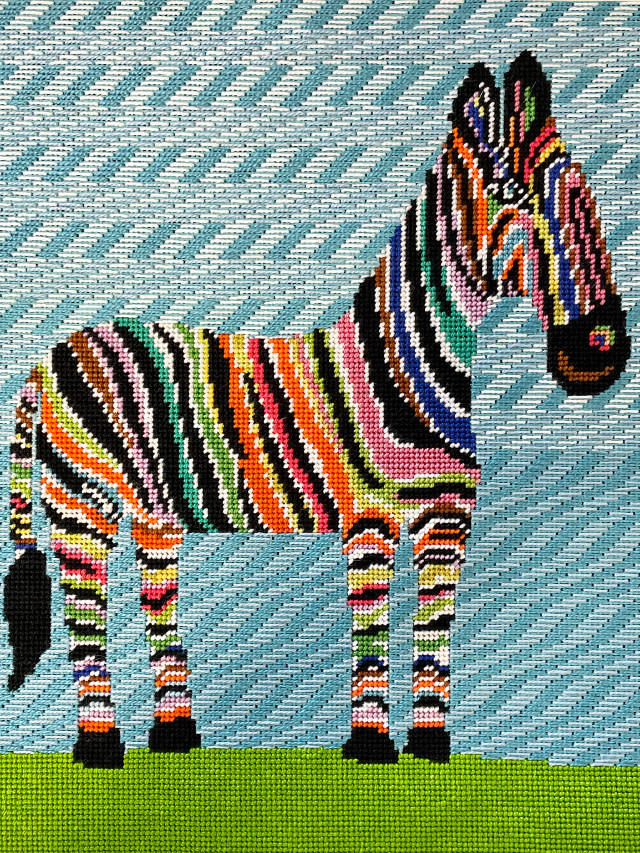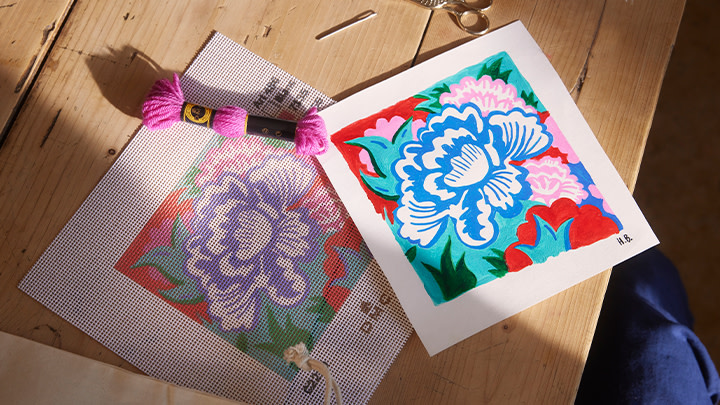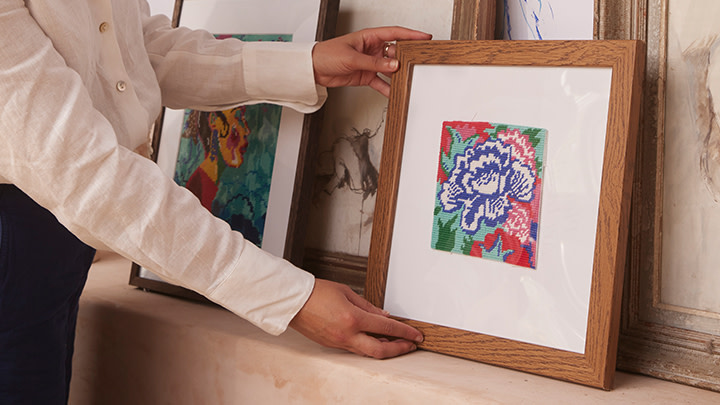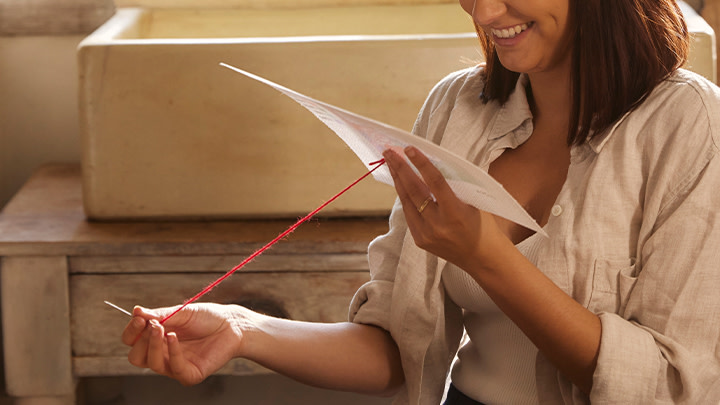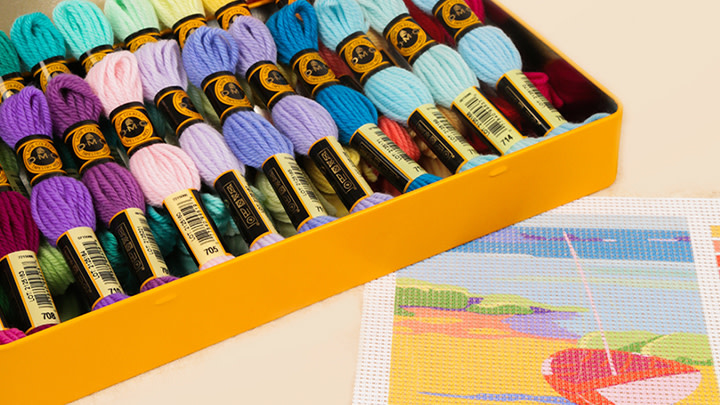Tapestry is a term that is used for two very different techniques and sometimes interchangeably with needlepoint. It can be a bit confusing. In this article we explain the difference so you can be sure that when you choose a pattern or supplies you know what you are getting.
What is Tapestry?
Originally the word tapestry referred to woven fabric made on a loom. This was the technique used to make medieval wall hangings. These woven tapestries are incredibly complex and time consuming so in the 1800s people started to use needlepoint techniques to stitch on canvas and create faux tapestries. Now the word tapestry is routinely used for both crafts. You may also see stitched tapestry called canvas work. Most tapestry kits and supplies are for the stitched technique and it’s the definition we will use for the rest of this article.
Tapestry usually uses small diagonal stitches throughout to completely cover the canvas. These repetitive tent stitch techniques make it a very rhythmic and relaxing stitching experience. Usually, tapestry designs are printed on the canvas so there are no complicated charts to follow or difficult stitches to learn. You are just stitching using the same stitch following the colors already printed on the canvas for you. Tapestry is traditionally worked in pure wool which creates very durable fabric that is ideal for homewares. You can also use soft matte cotton thread.
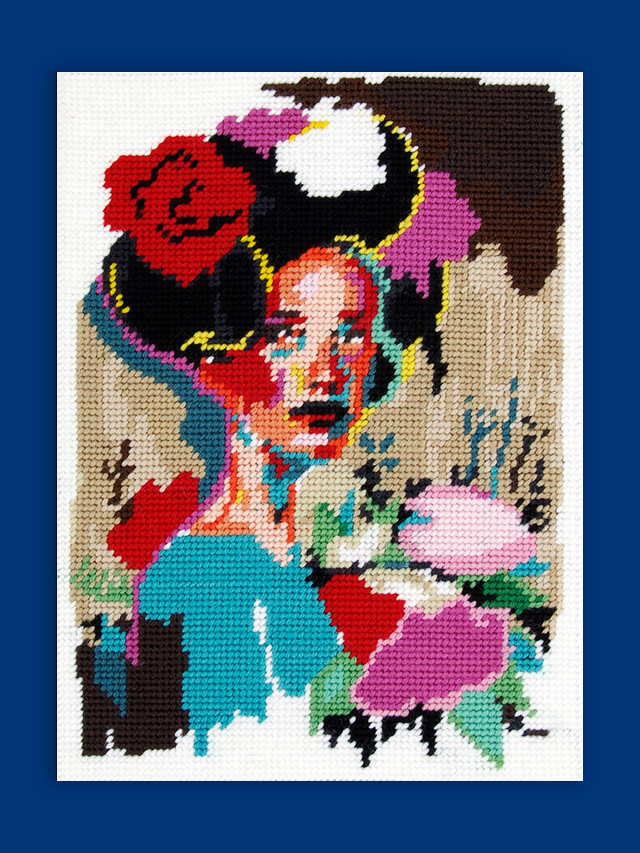

What Is Needlepoint?
Needlepoint is a specific type of tapestry that usually uses a wider range of threads and stitches. The stitches still completely cover the canvas completely.
Needlepoint is characterized by decorative stitch techniques usually used to create texture and interest in backgrounds or key sections of the design, some makers even create their own stitch designs. Needlepoint is brilliant if you like to experiment with different threads and combinations of threads. You can use whichever thread you like so long as you completely cover the canvas.
Canvases for needlepoint are also usually preprinted or painted onto the canvas which makes tapestry and needlepoint an incredibly beginner friendly craft that is really relaxing. Some needlepointers enjoy painting their own canvases. You can also find needlepoint design charts in books and magazines which you follow in much the same way as a cross stitch chart. Each square represents an intersection of canvas.
Whether you decide to try your hand at tapestry or needlepoint we hope you enjoy these relaxing and creative crafts for yourself.

